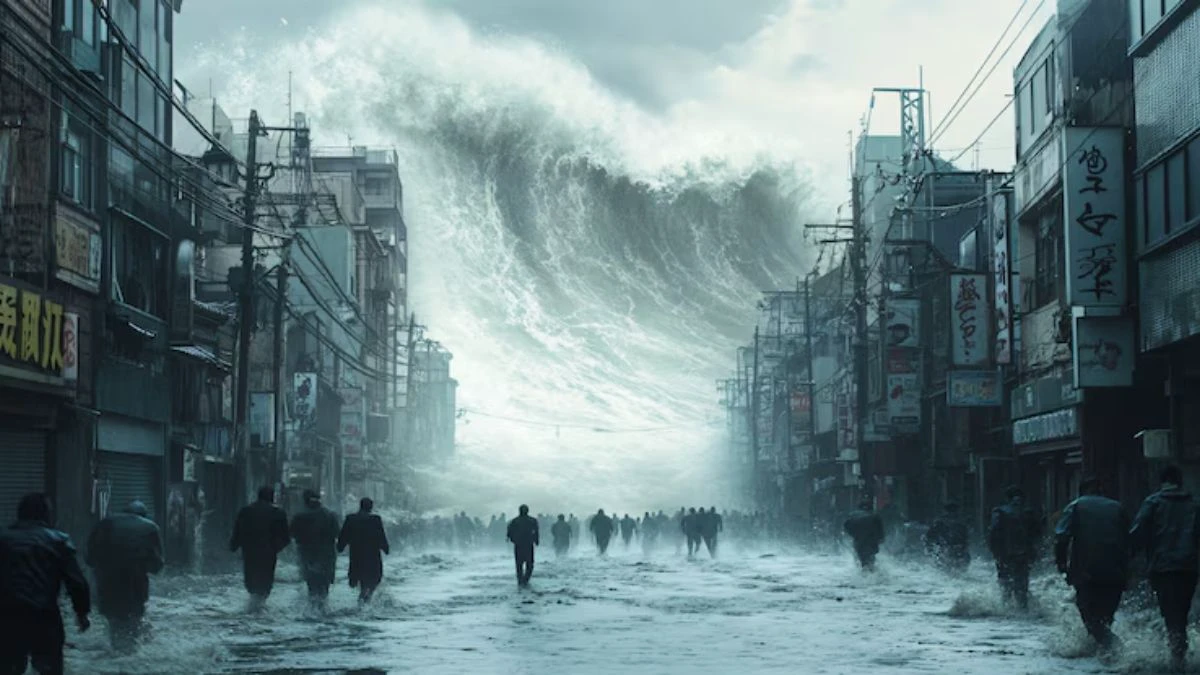Japan earthquake today: As Japan braces for the looming threat of a devastating Nankai Trough megaquake, a controversial prediction by manga artist Ryo Tatsuki, dubbed Japan’s “New Baba Vanga” has triggered waves of anxiety across East Asia and impacted tourist arrivals.
Although scientists have categorically ruled out any seismic disaster today, the government of Japan remains alarmed at a very real threat of a strong earthquake within the next few decades.
Will the July 5 Earthquake Prediction Come True?
Public fear has been fueled by Ryo Tatsuki, an ex-manga illustrator who is commonly referred to as the “New Baba Vanga” due to her claimed history of making correct prophecies. In her manga The Future I Saw, published again in 2021, Tatsuki predicted that a massive seabed fissure would occur between Japan and the Philippines and lead to a three-way bigger tsunami compared to the one in 2011. Admirers credit her past predictions of the 2011 Tohoku tsunami and earthquake, which claimed almost 20,000 lives and led to the Fukushima Daiichi nuclear meltdown. Fans also pointed to Princess Diana’s death, and the COVID-19 pandemic as evidence of her “prophetic” abilities. This year , clips and articles on Tatsuki warning of a July 5th megaquake, linking her manga to recent swarms of small quakes near the Tokara Islands and volcanic activity on Kyushu have spread like wildfire throughout East Asia, sending people into a panic and even prompting a few tourists to postpone their visits to Japan.
Though meteorologist departments maintain that no evidence for a July 5 megaquake exists, Japan is still vulnerable to a catastrophic Nankai Trough quake in the coming decades. As indicated in records, the region has been responsible for producing sets of huge earthquakes every 90 to 200 years, some of which include the 1707 Hōei earthquake, the 1944 Tōnankai earthquake, and the 1946 Nankaidō earthquake.
What Is the Nankai Trough Megaquake?
The Nankai Trough is a deep-sea trench running off Japan’s southern Pacific coast from Suruga Bay to Kyushu. It is the location where the Philippine Sea Plate subducts under the Amurian Plate, and hence it is one of the globe’s most hazardous seismic areas. Japan experiences around 1,500 earthquakes each year and has some of the world’s strictest building codes and best tsunami warning systems. Japan’s administration has warned there is an 80 per cent chance of a magnitude 9-class earthquake along the Nankai megathrust before 2055. Government estimates suggest a worst-case scenario could see up to 298,000 deaths, massive tsunamis over 30 metres high, and 2.35 million buildings destroyed-mainly in the densely populated Pacific coast regions including Osaka, Nagoya, and Shizuoka.
No Scientific Basis For Specific Earthquake Dates
Japan’s Meteorological Agency (JMA) and top seismologists flatly denied that earthquakes can be forecast with exact timing. “It is scientifically impossible to know the exact day and size of an earthquake,” the JMA stated, denouncing the manga prediction as “hoax” and “disinformation.” Tatsuki herself attempted to soothe speculation, assuring fans that she is “not a prophet” and asking them to believe expert judgment instead.
In the midst of the hype, Japan has sanctioned a large overhaul of its national disaster preparedness plan. The new strategy, which was completed this year, includes ambitious objectives to lower earthquake fatalities by 80% and decrease structural damage by 50% within the next ten years.
Some of the key steps include:
• Retrofitting millions of houses to earthquake-proof quality
• Constructing additional tsunami evacuation towers
• Enhancing AI and satellite-informed early warning systems
• More frequent community evacuation drills
• Securing hospitals, schools, and transportation centers
More than 200 concrete objectives will be reassessed every year by the Prime Minister-led Central Disaster Management Council. The strategy also emphasizes local government initiatives supported financially by Tokyo. Travel industry reports have shown that the superstition surrounding the manga prophecy has taken a toll on bookings to Japan from some Asian countries. Hong Kong airlines have even reduced flights by citing lower demand.
